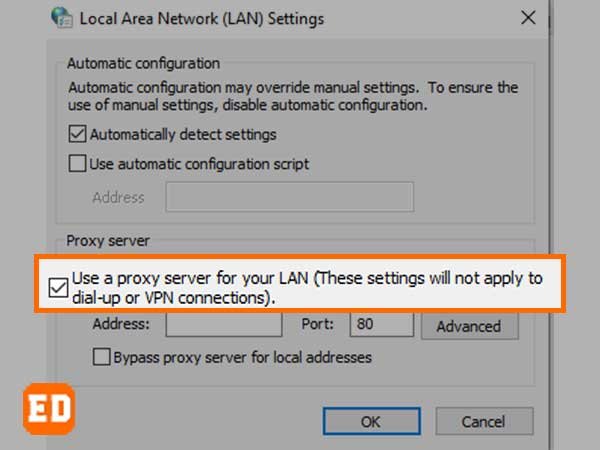Gmail being the most reliable email service provider has always been the first preference of netizens to send and receive messages via emails. Nevertheless, Gmail is not sans technical issues, and one most prominent issue out of all is Gmail attachment issues.
When you are unable to drag and drop files to Gmail, can’t attach files, and even the dedicated attachment button is not responding at all, you will get a popup displaying an error message stating: “There was an error attaching your file” or “Attachment failed. This may be due to a proxy or firewall.”
Reasons Why “Gmail Attachment” Issues Occur?
Usually, the Gmail attachment issue occurs due to firewall and proxy issues. But, sometimes a few other reasons can lead you to Gmail attachment issues. Let’s check them out:
- Gmail doesn’t allow you to share executable files (EXE) for security reasons as they are likely to spread viruses across the web.
- There are chances that browser-related issues can keep you from sending or receiving Gmail attachments. Having a browser extension can affect the smooth functioning of your Gmail account.
- Talking of browsers, using an outdated or unsupported browser can affect your Gmail experience. In this, make sure you are using supported browsers like Chrome, Edge, Firefox, and Safari.
Read Also – Gmail Won’t Load Issue Fixed
7 Solutions to Fix Gmail Attachment Issues
Solution 1: Turn off the Security Firewall
Switching your firewall is one major fix to the Gmail attachment errors. By disabling your antivirus, you can prevent your security programs from interfering with the functioning of your Gmail account.
To stop the firewall on your Windows PC, follow these simple steps:
- Access the “Run” dialog box using pressing and holding the “Windows +R” key.
- Enter “firewall.cpl” and then click on OK.
- From the left-side menu, choose “Turn Windows Defender Firewall on or off”.
- Now, from the “Domain, Private, and Public network settings”, choose “Turn off Windows Defender Firewall” and then select OK.
If you have third-party antivirus software installed on your device, you can switch it off. After your issue has been resolved and now you can successfully share your attachment via Gmail messages, it is advised to switch it back on.
Solution 2: Disable Your Proxy Server
Having the proxy server enabled can be one cause due to which your Gmail is not allowing you to attach files. Therefore, if you have the proxy server “ON”, you can try disabling the web browser proxy, using the steps given below:
- From the Windows search bar, type “Internet Options”, and then click on the same when it appears on your screen.

- Now, click on Connections and then click on the LAN settings button.

- Unselect “Use a proxy server for your LAN” and tap on OK.

Solution 3: Clear all Browser Cache and Cookies
Removing cookies and cache from your browser is one effective way to tackle the browser-related errors that are preventing you from sharing the attachments using Gmail.
For every website that you visit, leave the cache in your browser to enhance the user experience by saving the footprints of the website such as images. The main purpose of browser-cache is to load the webpage faster in the future and cut the hassle you might face. But, it might not work as expected and induce browser issues when accumulated in bulk.
Therefore, it is recommended to clear your browser cache and cookies when you can’t attach files in Gmail messages. Alternatively, you can switch to a new browser that is free from cookies.
Solution 4: Update the Flash Plug-In
Flash plug-in is an additional utility that allows interaction with webpages, visual content, and some websites that require a medium to connect. Most of the users might not know, but Gmail’s automatic uploader depends upon Flash, and the scarcity of it can lead to attachment issues.
Thus, if you are using an outdated version of the Flash plug-in, your Gmail account becomes prone to errors and thus installing the latest version can do the cure.
Here is how you can update the Flash plug-in.
- From your browser, go to Adobe’s web page with the list of latest Flash versions.
- Unselect the options for additional software that you want to avoid.
- Tap on the “Install Now” button to get the Flash Player installer.
- Access the Adobe Flash Player installer page from the “Download” section and install a new version of Flash.
- Next, make sure that Flash is enabled on your browser.
- Go to Chrome and click on the “Customize Google Chrome” button and then select “Settings”.
- In the “Settings” page, select the “Advanced” option to access the drop-down menu.
- Again, tap on “Settings” and then choose “Flash”.
- Choose the “Allow sites to run Flash” option.
Important Note: Flash-In extension no longer works in Google Chrome, but if you are using any other browser than Chrome, these steps will help.
Solution 5: Use Incognito Mode of Browser
If the browser is loaded with add-ons or extensions which are likely to interact with web services like Gmail, you can enable the incognito mode for your browser. It is an ideal way to check if add-ons are the real cause of attachment errors or it’s something else you need to fix.
Thus, access the incognito mode or private browsing mode for your browser, sign-in to your Gmail account, and check for improvements.
If you can now send Gmail attachments, it is one of the extensions that is keeping you from sending or opening Gmail attachments. You can disable all extensions one by one in the normal window to detect the problematic extension and replace or delete it from your browser to restore the optimum performance of your browser.
Solution 6: Update Browser or Switch to a New One
The most advanced browser automatically installs updates and requires no manual effort. But, if you are using your browser for quite a while and haven’t closed it, you might need to install the update manually. For every web browser, there is a different way to install the pending update. Here are the ways for updating commonly-used browsers namely Chrome, Firefox, and Edge:
Update Chrome:
- Click on the “Menu” button from the ellipses icon from the top-right corner of your browser.
- Go to Help>> About Google Chrome.
- To get any available updates, click on Relaunch.
Update Firefox:
- Click on “Menu” from the ellipses menu from the top-right corner.
- Go to Help>>About Firefox.
- Firefox will check for available updates and download them automatically. Tap on “Restart to Update Firefox”.
Update Edge:
- Click on the “Menu” button, using the ellipsis button from the top-right corner.
- Now, go to “Help and feedback > About Microsoft Edge”.
- Tap on the “Restart” button to apply the updates.
Solution 7: Manage the “Network.http.spdy.enabled” Setting in Firefox
SPDY is used to modify the parts of the HyperText Transfer Protocol (HTTP) for providing a better-improved web performance of your browser. It is mainly used in Firefox. These settings can be adjusted using these steps if you are a Firefox user:
- Launch Firefox, open the Firefox‘s URL bar and enter about:config.

- Type “Network.http.spdy.enabled” using the search box at the top of the “about:config” page.
- Check for the Network.http.spdy.enabled setting and replace the value with false.

- Quit Firefox and restart your browser.
This resolution is only used for Firefox users. Doing this will fix Gmail attachment issues.
Read Also – Transfer All Mail from One Gmail to Another






